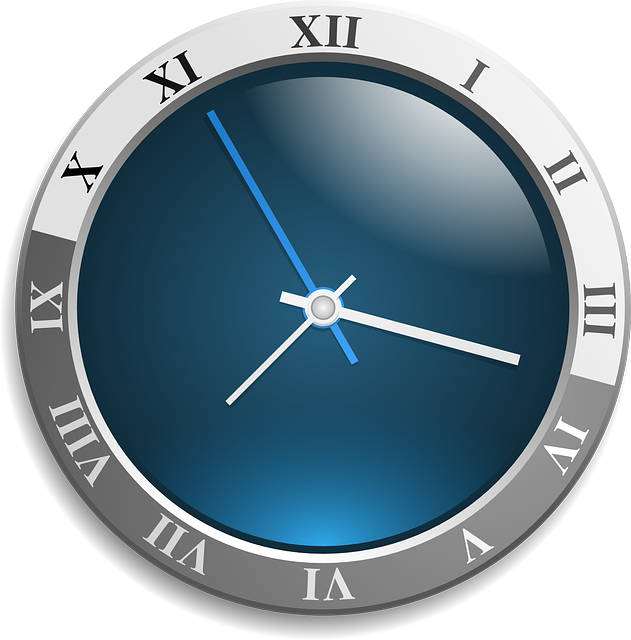We are surrounded by motion, whether it will be the swing on a playground or the ticking of a clock. Two types of motions that are particularly essential in physics are periodic motion and oscillatory motion. They are not exactly the same, despite their apparent similarity.

Periodic and Oscillatory Motions
Periodic motion of a body is that motion which is repeated identically after a fixed interval of time. The revolution of earth around the sun is periodic motion. Its periodic of revolution is one year.
What is Periodic Motion?
Any motion that repeats itself at equal intervals of time is considered periodic. Imagine it as a repeating tune that plays, stops, and then begins again in the same manner.
Examples of Periodic Motion:
A clock’s hands rotating around the dial.
• Earth’s orbit around the Sun.
• A wall clock’s pendulum’s movement.
• A tuning fork’s vibrations.
In each of these situations, the object repeatedly returns to its initial position after a predetermined of time.

Important Terms:
Time Period (T): The amount of time needed to finish one motion cycle. Seconds are used to measure it.
Frequency (f): How many cycles are finished in a second. It is expressed in Hertz (Hz) and is the reciprocal of the time period (f = 1/T).
Periodic function: A mathematical function which represents a periodic motion is called a periodic function. A function f(t) is said to be periodic if f(t) = f(t + T), where T is the time period of the periodic function. Any periodic function can be expressed as a superposition of sine and cosine functions of different time periods with suitable coefficients sin ωt and (sin ωt + cos ωt) are the periodic functions with a period 2π / ω, e– ωt and log (ωt) are non-periodic functions.
What is Oscillatory Motion?
An object moving to and fro around a fixed point or location also known as the mean position or equilibrium position is said to be oscillating.
Consider a youngster swinging on a swing. The swing oscillates, moving forward, backward, and then returning to its starting position. It is also periodic since it continues to occur at regular periods.
So, every oscillatory motion is periodic, but not every periodic motion is oscillatory.
Examples of Oscillatory Motion:
The swing of a pendulum.
Vibrations of a guitar string.
Motion of a spring.
The movement of a loaded piston in a cylinder.
Simple Harmonic Motion (SHM): The Most Common Oscillatory Motion
Simple Harmonic Motion (SHM) is one of the most significant forms of oscillatory motion. It is the motion where the restoring force works in the opposite direction and is directly proportionate to the displacement from the mean position.
Mathematically, F = -kx
Where:
F is the restoring force,
x is the displacement from the mean position,
k is a constant,
The minus sign shows that the force is directed opposite to the displacement.
This kind of motion is smooth, repetitive, and predictable.
Oscillatory or vibratory motion is that motion in a which a body moves to and fro or back and forth repeatedly about a fixed point (called mean position), in a definite interval of time. In such a motion, the body is confined within well defined limits (called extreme positions) on either side of mean position. Thus, a periodic and bounded motion of a body about a fixed point is called an oscillatory or vibratory motion.
Key Features of SHM:
Mean Position: The central point around which the motion occurs.
Amplitude (A): The maximum displacement from the mean position.
Time Period (T): Time taken for one full oscillation.
Frequency (f): Number of oscillations per second.
Phase: Describes the state of the motion at a given time.
The displacement in SHM is usually given by: x(t) = A sin(ωt + φ)
Where:
x(t) is the displacement at time t
A is the amplitude
ω is the angular frequency (ω = 2π/T)
φ is the phase constant
Difference Between Periodic and Oscillatory Motion
Feature | Periodic Motion | Oscillatory Motion |
Repetition | Repeats after fixed intervals | Repeats to and fro around a point |
Direction | Not necessarily to and fro | Always to and fro |
Examples | Earth’s revolution, clock hands | Pendulum, vibrating spring |
Is it always periodic? | Yes | Yes |
Is it always oscillatory? | Not necessarily | Yes, by definition |
Why Are These Motions Important?
Studying sound, light, waves, and many mechanical systems is made easier by an understanding of periodic and oscillatory motions. Clocks, musical instruments, bridges, skyscrapers, and even space missions are designed using these ideas.

Summary:
After regular spans of time, periodic motion repeats itself.
One particular kind of periodic motion that revolves around a central point is oscillatory motion.
The most fundamental and most researched type of oscillatory motion is called Simple Harmonic Motion (SHM). These motions represent actual movements and aid in our understanding of how the universe functions; they are not merely physics ideas.
Like the Earth’s orbit around the Sun, periodic motion repeats itself at regular periods. Similar to a swinging pendulum, oscillatory motion is a form of periodic motion in which an object swings back and forth around a fixed point. While not all periodic motions are oscillatory, all oscillatory motions are periodic.
Since circular motion does not revolve around a central point, it is not oscillatory. On the other hand, a motion is deemed periodic if it repeats at a set time, such as the hands of a clock.
Simple Harmonic Motion (SHM) is a unique kind of oscillatory motion in which the restoring force works in the opposite direction and is directly proportionate to the displacement from the mean location. It is the most basic and optimal type of oscillation.
Yes,. The Earth’s rotation around the Sun, for instance, is a periodic motion but not oscillatory since it does not revolve around a central point.
Oscillatory motion has amplitude, time period, and frequency; it oscillates back and forth around a mean position; it is repetitive throughout time; It adheres to a sine or cosine pattern in SHM.
The greatest deviation an object may make from its mean position is known as its amplitude.Time Period is the amount of time needed to finish one motion cycle. These two metrics aid in characterizing the object’s “fast” and “far” motion during oscillation.
There is oscillatory action everywhere! Examples consist of vibrating guitar strings, pendulum clocks, springs in toys or machinery,
Mobile phone vibrations;
Heartbeat (for medical monitoring);
- Swinging on a swing.